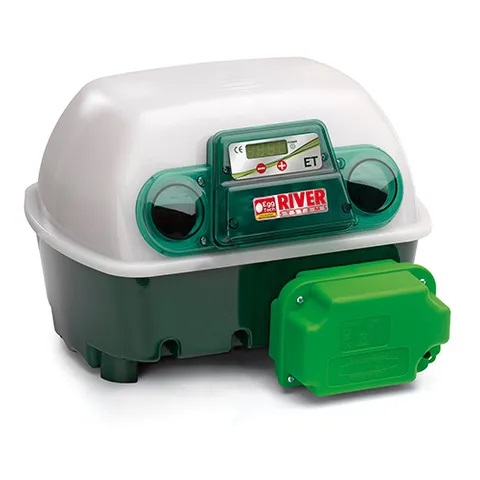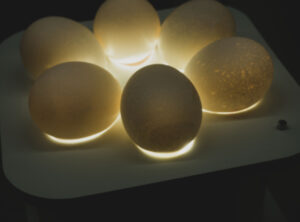What you need to know about Incubation Day 4
Time has gone by quickly and it is time for you to do your first candling! Candling is kind of like an ultrasound for chicken eggs, just much, much cheaper. Refer to the candling article to know what you are looking for and what you need to do candling properly.

Checkout our line of Automatic Egg Incubators and Brooding Cages
The First Candling

Candling is a very essential part of the incubation process. By shining a light on one end of an egg, you should be able to see what’s going on inside of it. Candling allows you to pick up on eggs that haven’t developed as they should and thus are putting the other eggs at risk as well.
Eggs that have gone bad can develop pressure on the inside caused by gas built up. This gas built up can cause them to potentially explode covering your incubator and other eggs in yucky, smelly egg goo and all the bacteria that comes with it.
Things To Check
Make sure that the temperature and humidity are still 100% accurate. Also, make sure that you are quick with your candling, you don’t want to keep the eggs out of the incubator for too long. Once done with the candling, make sure that you close the lid properly. If the lid is slightly open, your humidity will drop quite a lot. This might affect your eggs if you don’t notice in time to fix the problem.
If the humidity in the incubator is too low, add some water to make up for the loss. If the humidity is too high, open and close the lid until the problem is fixed. Always make sure that the lid is properly closed if you are having low humidity issues.
Keep Records
It is very important that you create a record-keeping system for yourself. You will need to keep track of the growth of the embryo during every candling. The best would be to print some eggs on a paper and number them.
You can then use a marker and number your eggs from the incubator to make sure that you have the correct egg every time for the set of records you created. You can draw what you saw inside each egg on your printed egg sheet or you can keep a diary of what was seen for each egg. Make sure you have at least a few blank copies in case you mess up.
After you complete the candling and make sure that everything is still in good working order with the incubator, you can file your records or keep them somewhere safe so you can compare your next candling with the results from this one. Make sure to properly dispose of any bad eggs and wash your hands after. Bad eggs are a potential health risk not just for your embryos and other chickens, but also for yourself and your family.

Experience and Learn Egg hatching with the 12 Day Chicken Hatching Program
Recommended for Early Learning School centers, Aged Care, different companies and at homes for personal learning experience. Providing Chicken Programs Since 2001 to Sydney, Central Coast, Canberra and the Illawarra.


